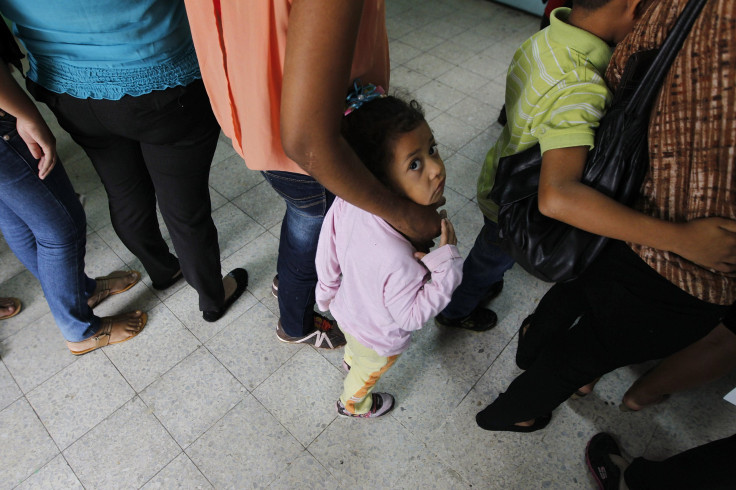Desperation and Violence in Honduras' Murder Capital Propel Migrants Out of the Country

In 2012, “Maria” and her husband sold a piece of land they owned in San Pedro Sula, Honduras, in order to pay the $5,000 fee – an immense sum for the poverty-stricken country -- to the coyote who would guide Maria across the border through Guatemala and Mexico to the United States.
The grueling, three-week journey was interrupted when Maria and the group she was traveling with were kidnapped and held at gunpoint by the Mexican drug cartel Los Zetas. A cartel member called Maria’s employer in San Pedro Sula, saying that unless he received $10,000, she would be killed. After some resistance, Maria’s employer was able to raise around $2,000 to pay the cartel, and Maria was let go. She made it across the U.S. border, about 20 miles south of Houston, Texas, when she was picked up by U.S. immigration authorities and sent back to Honduras, bereft of her land and savings.
Tens of thousands of Hondurans have made the same desperate journey north in recent years in an attempt to flee deepening violence and poverty. Children are a major part of this migratory flow: Tens of thousands of unaccompanied minors have arrived in the United States in overwhelming numbers that reached a crisis point this year – and thousands more never even make it to the U.S. border. In the first half of 2014, 2,200 of the unaccompanied child migrants who have managed to cross into the United States were from a single city -- San Pedro Sula, Honduras, known as the world’s deadliest city in the world’s deadliest country.
NGO workers based in San Pedro Sula – who spoke with IBT on the condition of anonymity for fear of being targeted – said children are particularly at risk. “Children are caught in the crossfire,” one worker, who spent 42 years in the city, said. “Children face insecurity most of all. They face situations of being forced into using drugs and working in the drug trade, petty crime, and even more advanced crime.”
“It’s very insidious, especially for young girls in Honduras, because they are a high target for being trafficked,” she added. “Gang members go into the schools and will identify kids who are from a home where they’re very poor and start telling them, ‘How would you like a job in Guatemala? We’ll get you a passport, we’ll get you out.’ And they turn them into prostitutes.”
Two major rival gangs – the Mara Salvatrucha and Barrio 18 – rule the city, recruiting children as early as kindergarten, and those who resist face violent reprisals. Local press reported in May that seven schoolchildren were murdered within the span of one month, with ages ranging from 7 to 13, all of whom were tortured and shot by gang members. Other residents are at risk of being caught in the middle of gunfire battles in the street. In 2013, San Pedro Sula had a homicide rate of 187 per 100,000 people, according to the Mexican think tank Citizen Council for Public Security, Justice, and Peace, making it the highest murder rate in the world outside a war zone for the third consecutive year.
Street violence runs parallel to extortion rackets that squeeze money from local businesses, as well as the drug trade, which bloomed due to the city’s prime location as a transit point and the breakup of Mexican drug cartels.
While the case is most severe in San Pedro Sula, violence and rampant poverty are major facets of life throughout Honduras, and much of the crime goes largely uninvestigated and unpunished. In May, Jose Guadalupe Ruelas, the national director of Casa Alianza (Covenant House) in Tegucigalpa, was beaten by members of the military police after speaking out about the killing of children in Honduras. The police later said that Ruelas’ injuries were the result of a drunk-driving collision.
The NGO workers who spoke with IBT said that city residents face a heavy sense of apprehension that pervades their daily lives, which has propelled many children out of the country in search of better conditions.
“There are women who have said, ‘I would rather have my child die trying to get to the U.S. than to have them killed in my front yard,” one NGO worker said.
“I frankly have never met a person who lives in Honduras that has not been touched by violence,” another said.
© Copyright IBTimes 2024. All rights reserved.






















